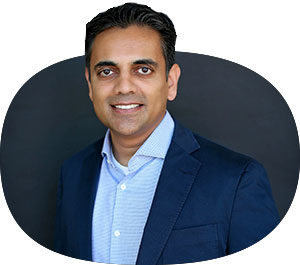
How Do Braces Stains Happen?
As an orthodontist with 20 years experience, we’ve helped thousands of adults and children in Tulsa and Claremore get their dream smile with braces. While we can all agree that excellent oral hygiene is a must while wearing braces, in reality, sometimes we fall off the bandwagon with our diligent oral care routines. So whether you’re new to wearing braces or further along in your treatment, teeth stains from braces might be something you’re worried about.
Table of Contents
Here, we’ll talk about topics of braces stains:
When you have braces, the brackets and wires create more nooks and crannies for plaque buildup and tooth decay. Plaque can build up around your braces brackets and in the gumline. Since brackets are bonded to your teeth with an air-tight seal, you don’t typically find teeth stains under the bracket, or they’re not as developed.
Admittedly, you have to be more diligent with brushing and flossing to keep your teeth cleaner around the brackets and between each tooth. But it’s not always just about oral hygiene. Here are the other most common causes for teeth stains from wearing braces, apart from lackluster oral care:
Constant Eating or Drinking
It’s fair to say that having a more scheduled eating and drinking routine is easier on the health of your teeth than if you’re constantly snacking. When you take in foods or drinks, the pH level (acidity level) in your mouth can drop below 5.5 from the act of eating. Any pH level below 7 is considered acidic. Cavities are more likely to develop in an acidic environment because acidity weakens teeth. If your mouth is constantly at a pH level of 5.5 because you eat frequently, your teeth can begin to demineralize, meaning minerals like calcium and phosphate that make up your protective enamel layer begin to erode. This can make your teeth more susceptible to tooth decay around your braces. Having breaks between meals and drinks (excluding water) gives your mouth a chance to return to a neutral pH of 7 or to a more alkaline level. These are safer for your tooth enamel.
Sugary Foods and Drinks
Another food-related cause of braces stains is the type of foods and drinks you consume — sugar is a main culprit. We all know that for both our oral and overall health we should moderate our sugar intake. But according to one study, it’s about the frequency of your sugar intake, not the amount when it comes to teeth. The teeth-damaging effects of sugar are more serious when you consume sugary foods on a regular basis versus the quantity of sugar you eat. In other words, exposing your teeth to sugary foods frequently is more likely to contribute to braces stains than eating a lot of sugar only once in a while.
Keep in mind that what’s considered “sugary foods” isn’t just the obvious: desserts, candy, soda and fruit juice. Starchy foods like potatoes, rice, breads and pasta contain a form of sugar, making your mouth both more acidic and leaves sugar on your teeth. And the milk that many of us grow up drinking to make us healthy and strong? Though it does have health benefits, milk contains lactose, another form of sugar. Again, sugary foods don’t contribute to teeth stains in and of themselves — it’s how often we eat them, and, as we’ll cover later, if we clean our teeth in between times.
Acidic Foods and Drinks
Apart from sugary foods and drinks, acidic foods like citrus fruits and drinks, vinegar, sports drinks, the carbonation in sodas and anything sour can erode our tooth enamel. These acidic foods and drinks can create a mouth environment more susceptible to braces stains if we consume them on a regular basis.
Sticky Foods
Sticky foods often fall into the sugary category we mentioned above. Foods like caramel candies and chocolate can contribute to braces stains down the road because they coat your teeth easily.
Colorful Foods That Can Leave Stains
Depending on which ones, colorful foods might or might not contribute to a more acidic environment in your mouth, to plaque build up or tooth decay. But they can stain teeth and braces brackets if consumed frequently — red and yellow-colored foods are more likely to stain ceramic braces than metal braces. Overall, bright or deeply-hued foods to consume less frequently are:
- Beets
- Berries like cherries, blackberries, blueberries
- Currants
- Curries
- Grape juice, pomegranate juice
- Red wine
- Tomatoes
- Mustard
- Coffee
Teeth-Whitening Products
Moving on from foods and drinks, you might be surprised to know that using teeth-whitening products when you’re wearing braces can hinder a beautiful white smile. Because braces brackets adhere to your teeth with an air-tight seal and adhesive, your teeth underneath the brackets aren’t affected by whitening products. We at The Brace Place suggest waiting on teeth-whitening treatment until your braces are off. We’re happy to suggest the best methods for taking this next step toward a brighter, confident smile!
Tobacco Products
Smoking cigarettes stains teeth a telltale yellow, so it’s not the best habit to have with braces. Smoking can also make your teeth more prone to plaque and weaken or cause damage to your gums and the bones in your mouth. Unhealthy gums, bone or teeth can also affect or delay the results of orthodontic treatment. And the smoke itself? Smoke can penetrate through the adhesive that holds your braces brackets to your teeth, staining the tooth surfaces underneath.
What Do Teeth Stains from Braces Look Like?
Now that we’ve covered what can cause braces stains, let’s talk about what these stains look like. Your first thought might be that braces stains are just yellow or gray. And you’re right! Plaque build up does yellow your teeth. But stained teeth after braces come off can also look like white spots on teeth. If you see these dull white spots after braces, they are typically the result of tooth decay that happened around your brackets.
How to Avoid Braces Stains
Our team at The Brace Place spends a lot of time educating our patients about the best techniques for brushing and flossing with braces. Hands down, a thorough and careful oral hygiene routine is your best defence against braces stains.
Brush Thoroughly and With Care
When you didn’t have braces, the rule of thumb to brush twice a day worked great. But with braces, brushing after every meal is preferable. You want to get rid of any food debris that’s stuck in your brackets and wires or sweep away any sugar that’s stuck to your teeth with a good, 2-3 minute brushing. Position your soft-bristled toothbrush — manual or electric — at a 45 degree angle and brush away from the gumline with a fluoride toothpaste. (But not the whitening kind!) Brush at the gumline in small circles. Make sure you give yourself 10-15 minutes for your entire oral hygiene routine to make sure you clean well and help avoid stained teeth after braces.
You’ll be pleased to know that you don’t always have to brush right away after a meal. Waiting half an hour after eating can allow your saliva to wash away acids from your food, give your mouth a chance to increase its pH balance and give your enamel a chance to settle.
On the off-chance that you’re not at home or don’t have a toothbrush with you, swishing water around your mouth after a meal or drinks can help clean your teeth and braces. Let’s just say it’s better than nothing and can tide you over until you can brush later!
Floss At Least Once A Day
Flossing once a day is the recommendation of most dentists and orthodontists. However, you might find yourself flossing more often when you wear braces because bits of food can get stuck in them. Flossing helps remove food debris and the plaque build-up around your braces brackets that can lead to braces stains. Traditional, waxed floss will do the job, but if you’re having a tricky time threading the floss around your braces, we suggest trying floss products especially for braces wearers:
Floss Threaders – These are small, plastic, inexpensive tools that help you maneuver your dental floss around your braces wire.
Waterpik – A device about the size and shape of a toothbrush, Waterpiks spray a stream of water between teeth and at the gumline. Look for a Waterpik that has a tapered end made especially for orthodontic care which cleans more easily around brackets and wires.
Dental Tape – If you’re not used to flossing every day, your gums might be sensitive to traditional dental floss; they might feel a bit sore or bleed. Dental tape is a gentle way of getting your teeth and gums used to flossing yet is still effective. Dental tape is spongy, wider and flat like a ribbon. It can be tricky to use at first, but you get used to it quickly. Then once your teeth get used to flossing, you can switch to traditional dental floss.
Do I Brush or Floss First?
We can’t talk about brushing and flossing without answering the age-old question, “Do I brush or floss first?” A recent study found that flossing before you brush your teeth is more effective.
Choose Foods and Drinks That Won’t Stain Your Teeth
As you’ve already gathered, there are foods you can and cannot eat with braces. Many of these suggestions help with lessening plaque build up and stains. Remember to follow up a meal or drinks with good oral hygiene!
Foods That Can Help Prevent Stains
Earlier on, we mentioned that plaque and tooth decay are more likely to happen in an acidic oral environment. You’ll be glad to know that some foods can actually bring your mouth’s pH to a more neutral or alkaline state, creating an environment helpful for remineralizing your teeth against further staining. How to slowly get rid of braces stains? Whether during or after braces treatment, include the following all-star foods daily:
Cheese – Yes, it’s dairy. But unlike milk, cheese has minimal amounts of lactose sugar. Cheese gets its stain-fighting power from calcium, which, according to a 2003 study published in The American Journal of Clinical Nutrition, counteracts the effects of eating sugar. If you don’t like cheese, try other calcium-rich foods like dark, leafy greens, beans and legumes, or edamame and tofu.
Water – Seems pretty basic, right? And easy to do. Swishing with water helps take away some of the stubborn sugar and food debris after a meal or drink. It’s also the most recommended form of hydration by health professionals and your go-to replacement for sugary sodas, sports drinks and fruit juices.
Probiotics – Probiotics help if they are the same kind as what’s naturally in your mouth. And take them everyday for the best outcomes! Look for probiotic supplements or yogurt that has the following types:
- bifidobacterium
- reuteri
- rhamnosus
- salivarius
Visit Your Dentist and Orthodontist
Keep up with your twice yearly check ups with the dentist and your scheduled orthodontic visits with us at The Brace Place. Professional cleaning and assessments of your oral health will reveal any staining or tooth decay and you can get them addressed.
A Word About How Genetics Affects Your Tolerance Against Stains
We should mention that just like eye color or the shape of your earlobes, genetics plays a part in how your teeth respond to stain-causing foods or habits. If you’re someone who doesn’t get many cavities regardless of how well you brush and floss, we congratulate you! (And maybe envy you a little bit.) Dr. Anand Patel and The Brace Place team still recommend you follow our suggestions about how to avoid stains on your teeth with braces. It can only do you good!
Treating Stained Teeth After Braces
So your braces are off, congratulations! That first look at your new smile is an exciting moment. But if your teeth could use a little whitening, how do you get rid of braces stains? If you see that your teeth are whiter where your braces were, don’t fret, the unevenness will lessen over time with your saliva. But if you’re itching to get your straight smile even more dazzling, you can brighten your grin post-braces with:
- Drugstore whitening products like whitening strips, toothpastes and pens
- At-home bleaching trays: we highly recommend getting the trays and gel from your dentist or orthodontist for safer, quicker results. Drugstore whitening gels take longer.
- Professional services at the dentist or orthodontist office. We at The Brace Place don’t offer whitening but can refer you to trusted colleagues who do.
Let’s Keep Those Braces Stains At Bay Together
Your Tulsa and Claremore orthodontist is your ally against stains on your teeth. Just like you, we want your smile after braces to be healthy and confident! Contact us if you want to know more about keeping your teeth stain- and cavity-free during your braces treatment. We offer in-office and virtual appointments — choose whichever works best for you!



























